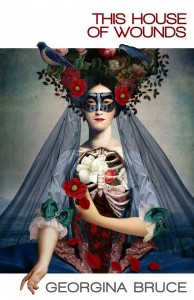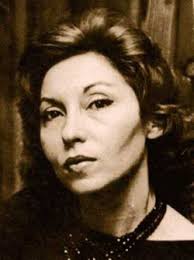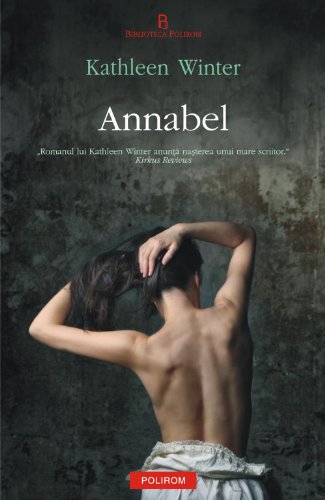Apologies for the stupid title. I stole it from this stupid article, so do forgive me.
1. The Tale of Genji, Murasaki Shikabu
The first novel ever written! Universally recognised as a great masterpiece of Japanese prose narrative, The Tale of Genji is an incredible insight into the moral, social, political and sexual values of its time and place.
2. To Kill a Mockingbird, Harper Lee
One of those books that changes lives, especially young lives. It teaches the importance of justice and integrity in the face of cruelty, racism, hatred and fear. A classic, by anyone’s standards.
3. Frankenstein, Mary Shelley
Widely considered to be the first science fiction novel, Frankenstein endures because of its insightful evocation of character and theme. Apparently, male-book-list writers also consider this a worthy book. Thanks a lot!
4. & 5. Jane Eyre, Charlotte Bronte, and Wide Sargasso Sea, Jean Rhys
You can’t read Jane Eyre without reading Wide Sargasso Sea. Bronte’s novel is a fantastically gothic tale of the unloved, the orphaned, the abused and the unwanted, set against the wild Yorkshire moors. Rhys’ novel provides a mind-altering reading/rewriting of Jane Eyre. It’s a powerful story of dislocation, dispossession, sexism, racism, and the ways in which these oppressions can lead to “madness”.
6. The Handmaid’s Tale, Margaret Atwood
A dystopia that has proved to be frighteningly prescient. Atwood’s powerful novel is a brilliantly written, witty, and terrifying insight into religious fascism.
7. Human Acts, Han Kang
A novel about the Gwangju massacre of 1980. I don’t know if such horrors have ever been written about with such compassion. A novel that lays ghosts to rest. Han Kang is a genius of the highest order.
8. Half of a Yellow Sun, Chimamanda Ngozi Adichie
Gabriel Garcia Marquez said, “the worst enemy of politicians is a writer,” and it’s hard not to recall those words when reading this effortlessly brilliant story about the state of Biafra. Like ‘Human Acts’, it lays out the human truth and makes us care.
9. The Bloody Chamber and other stories, Angela Carter
Only read this if you like magic, fairy tales, blood, sex, horror, dreams, talking animals, Jungian archetypes, and beautifully accomplished writing. Classic writing that will endure.
10. Kindred, Octavia Butler
A rich and complex novel that combines slavery memoir with fantasy, and political allegory with time travelling science fiction. An absolutely astonishing feat of literature.
11. The Left Hand of Darkness, Ursula K Le Guin
A ground breaking work of science fiction, with one of the most compelling settings ever devised. This novel explores sexual politics and colonisation within an adventure story that has you on the edge of your seat.
12. The Blazing World, Siri Hustvedt
Narratively innovative, thematically complex, a brilliant collage of a novel that makes you fall in love and leaves you utterly bereft. The art works in this book deserve whole galleries to themselves.
13. The Neapolitan Quartet, Elena Ferrante
These lucid, original and page-turning novels tell the story of a complicated friendship, and in doing so chart the subtle effects of class, poverty, marriage, and education on individuals and their communities.
14. The Lover, Marguerite Duras
No one writes like Duras, with such vulnerability, sensitivity, and courage. The Lover is a book that is suffused with feeling and contradiction, ardour and terror.
15. White is for Witching, Helen Oyeyemi
One of the best haunted house stories ever written. Oyeyemi is one of those perfect writers who can seemingly do anything at all, create ghosts out of thin air, anything she likes.
16. Netsuke, Rikki Ducornet
This short, terrifying novel takes us inside the mind of a dangerous narcissist as he hurtles towards destruction. Absolutely mastery from Ducornet: careful, precise, and shocking.
17. Magic for Beginners, Kelly Link
The same flavour of surrealist magical realism that Haruki Murakami writes – but Link does it better. These pieces expand the territory of the short story, setting up outposts in contemporary culture and politics, creating and dispelling illusions with masterful sleight of hand.
18. The Knife Drawer, Padrika Tarrant
This is the book I most frequently recommend to other book lovers. Why? Because it is utterly brilliant. Moving, funny, frightening, and very very weird. A Jan Švankmajer film in prose. Like nothing else you’ve read.
19. We Are All Completely Beside Ourselves, Karen Joy Fowler
The less you know about this funny, charming book before reading it, the better. One of the most awesome – and technically accomplished – twists of all time.
20. The Woman Upstairs, Claire Messud
“How angry am I? You don’t want to know. Nobody wants to know about that.” So begins this brave and magnificently furious book, so angry it could burst into flames at any moment and you wouldn’t be too surprised.
21. We Have Always Lived in the Castle, Shirley Jackson
An unreliable narrator, possible death-by-mushroom-poisoning, and angry villagers with pitchforks are just a few ingredients in this wonderfully funny and macabre book.
22. The Prime of Miss Jean Brodie, Muriel Spark
Spark’s sparse and precise language here serves to emphasise the brittle brilliance of Miss Jean Brodie – magnetic, charismatic, an inspirational leader — and a fascist. One of the greatest fictional characters of all time.
23. The Hour of the Star, Clarice Lispector
Lispector’s final novel, and her masterpiece. A deceptively simple story with a philosophically intense and ambiguous underlying narrative that echoes and ripples long after the end.
24. We Need to Talk About Kevin, Lionel Shriver
A big, American novel that both responded to and shaped the cultural conversation around motherhood and violent masculinity. Shriver writes with great authority in this deeply serious book.
25. My Name is Leon, Kit de Waal
It’s only just been published, but I predict that this book is going to be huge. HUGE. And deservedly so – it’s utterly heartbreaking, ultimately uplifting, and full of heroes. An instant classic.
Notes:
* This list was compiled just off the top of my head in response to that seriously ignorant Independent article, and I’ve left out SO MANY wonderful writers – I could have mentioned Rebecca Solnit, Magda Szabo, Charlotte Perkins Gilman, George Eliot, Jane Austen, Nnedi Okorafor, Zadie Smith, Nicola Barker, Lydia Davis, Alice Thompson and so many many many others.








